Qing Li
age ~42
from Center Moriches, NY
- Also known as:
-
- Qing Qing
- Phone and address:
- 95 Main St, Center Moriches, NY 11934
Qing Li Phones & Addresses
- 95 Main St, Ctr Moriches, NY 11934
- Center Moriches, NY
- Cainsville, MO
- Philadelphia, PA
Name / Title
Company / Classification
Phones & Addresses
Design Engineer
Interdigital, Inc.
Radio and Television Broadcasting and Communi...
Radio and Television Broadcasting and Communi...
781 3Rd Ave, Norristown, PA 19406
Design Engineer
Interdigital, Inc
Develops Wireless Technologies and Products · Mfg Wireless Technologies and Products · Wireless Communications Patent Owner & Lessor
Develops Wireless Technologies and Products · Mfg Wireless Technologies and Products · Wireless Communications Patent Owner & Lessor
200 Bellevue Pkwy, Wilmington, DE 19809
781 3 Ave, Norristown, PA 19406
6108787800, 6108787844
781 3 Ave, Norristown, PA 19406
6108787800, 6108787844
Resumes

Qing Li San Jose, CA
view sourceWork:
Guizhou Electric Power Test Research Institute
Jun 2012 to Jul 2012
Summer Internship in Guizhou Electric Power Test Research Institute,China
Jun 2012 to Jul 2012
Summer Internship in Guizhou Electric Power Test Research Institute,China
Education:
University of Pennsylvania
Philadelphia, PA
2011 to 2013
Master of Science in Engineering University of Manchester and North China Electric Power University
Sep 2007 to Jun 2011
Bachelor of Science in electronics
Philadelphia, PA
2011 to 2013
Master of Science in Engineering University of Manchester and North China Electric Power University
Sep 2007 to Jun 2011
Bachelor of Science in electronics
Skills:
VLSI design skills: Digital/Analog Circuit Design, Standard Cell Design, Physical Design, Cadence(CAD) Tools, soldering. Equipments: Multi-meters, oscilloscopes, power supplies, and basic lab equipment. Others: C, Python, Java, PHP, Verilog, Perl, MATLAB, Unix/Linux System, Web Design.
Vehicle Records
-
Qing Li
view source -
Address:3716 S Hereford Ln, Philadelphia, PA 19114
-
Phone:2676323396
-
VIN:5J6RM4H79CL070307
-
Make:HONDA
-
Model:CR-V
-
Year:2012
-
Qing Li
view source -
Address:3701 Conshohocken Ave APT 1115, Philadelphia, PA 19131
-
VIN:4T1CE30P17U755332
-
Make:TOYOTA
-
Model:CAMRY SOLARA
-
Year:2007
Isbn (Books And Publications)



Advances In Web-age Information Management: 5th International Conference, WAIMN 2004, Dalian, China, July 15-17, 2004, Proceedings
view sourceAuthor
Qing Li
ISBN #
3540224181

Advances In Web-based Learning-icwl 2004: Third International Conference, Beijing, China, August 8-11, 2004, Proceedings
view sourceAuthor
Qing Li
ISBN #
3540225420

Advances in Web-based Learning- ICWL 2005: 4th International Conference, Hong Kong, China, July 31 - August 3, 2005, Proceedings
view sourceAuthor
Qing Li
ISBN #
3540278958

Advances in Knowledge Discovery and Data Mining: 5th Asia-Pacific Conference, Pakdd 2001 Hong Kong, China, April 16-18, 2001 Proceedings
view sourceAuthor
Qing Li
ISBN #
3540419101

Advances in Web-Based Learning: First International Conference, Icwl 2002, Hong Kong, China, August 2002 Proceedings
view sourceAuthor
Qing Li
ISBN #
3540440410

Advances in Web Based Learning - ICWL 2006 : 5th International Conference, Penang, Malaysia, July 19-21, 2006: Revised Papers
view sourceAuthor
Qing Li
ISBN #
3540490272
Medicine Doctors

Qing Li
view sourceSpecialties:
Internal Medicine
Work:
Medstar Internal Medicine
9000 Franklin Sq Dr, Rosedale, MD 21237
4437776873 (phone), 4437778344 (fax)
9000 Franklin Sq Dr, Rosedale, MD 21237
4437776873 (phone), 4437778344 (fax)
Languages:
English
Description:
Ms. Li works in Rosedale, MD and specializes in Internal Medicine.

Qing K. Li
view sourceSpecialties:
Anatomic Pathology & Clinical Pathology
Work:
South Bend Medical FoundationSouth Bend Medical Foundation Pathology
530 N Lafayette Blvd, South Bend, IN 46601
5742344176 (phone), 5742341561 (fax)
530 N Lafayette Blvd, South Bend, IN 46601
5742344176 (phone), 5742341561 (fax)
Languages:
English
Description:
Dr. Li works in South Bend, IN and specializes in Anatomic Pathology & Clinical Pathology. Dr. Li is affiliated with Memorial Hospital Of South Bend.
Us Patents
-
Method And Apparatus For Providing An Internet Protocol Multimedia Subsystem Triggering Service
view source -
US Patent:20130279373, Oct 24, 2013
-
Filed:Apr 18, 2013
-
Appl. No.:13/865792
-
Inventors:Michael F. Starsinic - Newtown PA, US
Chonggang Wang - Princeton NJ, US
Kamel M. Shaheen - King of Prussia PA, US
Guang Lu - Montreal, CA
Dale N. Seed - Allentown PA, US
Qing Li - Princeton Junction NJ, US
Lijun Dong - San Diego CA, US -
International Classification:H04M 15/00
-
US Classification:370259
-
Abstract:A method and apparatus are described for providing triggering services over multiple access networks. A triggering service server (TSS) architecture includes a triggering identity function (TIF) which maintains a database of device and application identifier mappings across multiple access networks, triggering capabilities and triggering preferences. The TSS also includes a triggering decision function (TDF) that uses information from the TIF and determines how triggers should be performed towards a device and/or an application hosted on a particular device. The TSS also includes triggering gateways (T-GWs) that perform triggering in different domains. A “not-registered-triggerable” state may be used to indicate whether an entity, such as a device, application or user can receive triggers although it is not registered in a specific access network. Methods and apparatus are also described for implementing various unassisted triggering and assisted triggering procedures using wireless transmit/receive units (WTRUs), application servers (ASs) and service capability servers (SCSs).
-
Time And Frequency Tracking Reference Signals In New Radio
view source -
US Patent:20220416972, Dec 29, 2022
-
Filed:Jun 23, 2022
-
Appl. No.:17/847644
-
Inventors:- Wilmington DE, US
Lakshmi R. Iyer - King of Prussia PA, US
Joseph M. Murray - Schwenksville PA, US
Allan Y. Tsai - Boonton NJ, US
Guodong Zhang - Woodbury NY, US
Qing Li - Princeton Junction NJ, US -
International Classification:H04L 5/00
H04L 27/26
H04W 16/14
H04W 72/04 -
Abstract:In NR, a slot structure of a UE may be dynamic due the number of symbols of PDCCH and whether the slot has UL data, among other considerations. Additionally, to support multi-TRP/multi-panel/multi-BWP operation, a UE may be configured with multiple TRSs, and when a UE needs to receive multiple TRSs in the same slot, efficient signaling of the TRSs is important because of the high overhead involved. During a transmission, a UE may need to do beam switching when there is a beam failure, but existing systems do not have mechanisms for the UE to synchronize time and frequency with a new beam. Further, when a UE switches to a new beam, the effect on scheduled TRS transmission for old beams is unclear. Fine frequency and time tracking may also be required during an initial access procedure. Existing NR systems do not address how a UE may perform time and frequency tracking during an initial access procedure. Additionally, URLLC data may need to be transmitted to a UE immediately in an NR system. Existing NR systems do not address sending a TRS to a UE with URLLC data. Embodiments described herein address these and other issues.
-
Sidelink Drx Configuration For Unicast
view source -
US Patent:20220304103, Sep 22, 2022
-
Filed:Mar 7, 2022
-
Appl. No.:17/653852
-
Inventors:- San Diego CA, US
Junyi LI - Fairless Hills PA, US
Qing LI - Princeton Junction NJ, US
Dan VASSILOVSKI - Del Mar CA, US -
International Classification:H04W 76/28
H04W 76/14 -
Abstract:A first user equipment (UE) transmits, to a second UE, a transmission configuration indicating first timing information for a discontinuous reception (DRX) configuration for sidelink transmission from the first UE. The first UE transmits, to the second UE, a reception configuration indicating second timing information for the DRX configuration for sidelink reception by the first UE. The first UE receives a response from the second UE confirming or rejecting the DRX configuration.
-
Pbch Timing And Aspects Of Polar Code Design
view source -
US Patent:20220231784, Jul 21, 2022
-
Filed:Mar 11, 2022
-
Appl. No.:17/692258
-
Inventors:Lakshmi R. Iyer - King of Prussia PA, US
Allan Y. Tsai - Boonton NJ, US
Qing Li - Princeton Junction NJ, US
Joseph M. Murray - Schwenksville PA, US -
Assignee:IPLA Holdings Inc. - New York NY
-
International Classification:H04L 1/00
H04L 5/00 -
Abstract:PBCH design may affect timing indication in a wireless network and polar code interleaver design, among other things. Mechanisms may indicate half frame timing though de-modulation reference signal sequence initialization, de-modulation reference signal mapping order, or de-modulation reference signal resource element location.
-
Reliability Enhancement For Pdcch
view source -
US Patent:20230076897, Mar 9, 2023
-
Filed:Feb 12, 2021
-
Appl. No.:17/797730
-
Inventors:- New York NY, US
Mohamed AWADIN - Wilmington DE, US
Qing LI - Wilmington DE, US
Yifan LI - Wilmington DE, US
Allan TSAI - Wilmington DE, US
Pascal ADJAKPLE - Wilmington DE, US -
Assignee:IPLA HOLDINGS INC. - New York NY
-
International Classification:H04W 72/04
H04L 5/00 -
Abstract:Systems and methods for PDCCH reliability are disclosed. The PDCCH may be improved by introducing multi-TRP, multi-beam or repeated, PDCCH transmission and reception. In some methods and systems, PDCCH is transmitted on multiple CORESETs (Control Resource Set), where each CORESET is associated with a TCI state. In some cases, it is beneficial if a UE can determine that multiple received DCIs are duplicates, in order not to duplicate the corresponding UE action. Methods and systems for DCI duplication determination are disclosed. In some methods and systems, PDCCH is transmitted in a single CORESET, where the CORESET is associated with multiple TCI states. Various ways to apply the different TCI states to different disjoint frequency parts of the CORESET or the whole CORESET are proposed. Furthermore, the TCI state used for PDCCH may be used for subsequent PDSCH reception as well, in some cases. The disclosure also presents methods and systems on how to apply multiple TCI states of a received PDCCH to a subsequent PDSCH reception.
-
Unlicensed-Licensed Cross-Carrier Retransmission
view source -
US Patent:20230053730, Feb 23, 2023
-
Filed:Aug 18, 2022
-
Appl. No.:17/820709
-
Inventors:- San Diego CA, US
Junyi LI - Fairless Hills PA, US
Qing LI - Princeton Junction NJ, US -
International Classification:H04L 1/08
H04W 28/02
H04W 28/26
H04W 72/04 -
Abstract:Various aspects of the present disclosure generally relate to wireless communication. In some aspects, an apparatus of a user equipment (UE) may transmit, over an unlicensed carrier, an initial transmission of a transport block (TB) satisfying a condition and an indication that a retransmission of the TB will be communicated over a licensed carrier. The apparatus may retransmit the TB over the licensed carrier based at least in part on a failure of the transmission of the TB over the unlicensed carrier. Numerous other aspects are described.
-
Sidelink Discontinuous Reception (Drx) Support Indication And Detection
view source -
US Patent:20230040436, Feb 9, 2023
-
Filed:Apr 15, 2022
-
Appl. No.:17/659450
-
Inventors:- San Diego CA, US
Junyi LI - Fairless Hills PA, US
Qing LI - Princeton Junction NJ, US
Gabi SARKIS - San Diego CA, US -
International Classification:H04W 52/02
-
Abstract:Various aspects of the present disclosure generally relate to wireless communication. In some aspects, a user equipment (UE) may receive one of a transmission profile, of an application executing on the UE, that indicates whether sidelink discontinuous reception (DRX) is required, or a sidelink communication that indicates whether sidelink DRX is supported. The UE may communicate with one or more other UEs in accordance with a configuration for sidelink DRX, or with sidelink DRX disabled, based at least in part on the transmission profile or the sidelink communication. Numerous other aspects are described.
-
Frame Based Equipment (Fbe) In Nr-U
view source -
US Patent:20230035989, Feb 2, 2023
-
Filed:Sep 25, 2020
-
Appl. No.:17/763754
-
Inventors:- Wilmington DE, US
Qing LI - Conshohocken PA, US
Lakshmi R. IYER - King of Prussia PA, US
Pascal M. ADJAKPLE - Great Neck NY, US
Yifan LI - Conshohocken PA, US
Zhuo CHEN - Claymont DE, US
Allan Y. TSAI - Boonton NJ, US
Joseph M. MURRAY - Schwenksville PA, US
Rocco DI GIROLAMO - Laval, CA
Guodong ZHANG - Woodbury NY, US -
International Classification:H04W 74/08
H04W 72/12 -
Abstract:Methods and apparatuses are described herein for transmission priority, collisions, and sharing in the COT by frame based equipment (FBE). In accordance with one embodiment, a wireless communications device such as an FBE, may conduct two stage channel sensing to avoid collision between other FBEs nodes. The wireless communications device may adjust the energy threshold to reflect a channel access priority. The FBE may conducting continuous and non-continuous second stage channel sensing. The FBE may perform enhanced two stage channel sensing to exploit the remaining portion of the COT. The FBE may store a configuration for the second stage of channel sensing for both the downlink (DL) and uplink (UL).
Plaxo

Li Qing
view sourceFlickr
Myspace
Googleplus

Qing Li
Work:
Massachusetts Institute of Technology - Research Assistant (2010)
Right Question Project - Intern (2010-2010)
Right Question Project - Intern (2010-2010)
Education:
Massachusetts Institute of Technology - Management
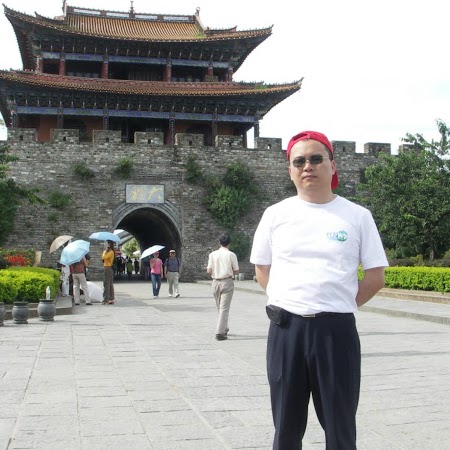
Qing Li
Work:
City University of Hong Kong
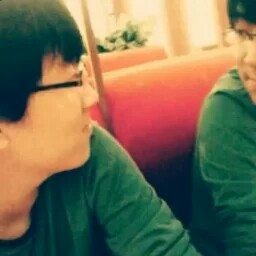
Qing Li
Education:
China University of Geoscience - Geology

Qing Li
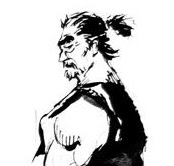
Qing Li
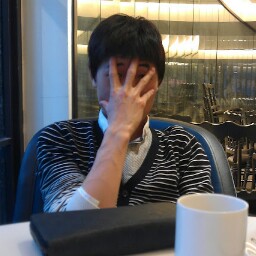
Qing Li

Qing Li
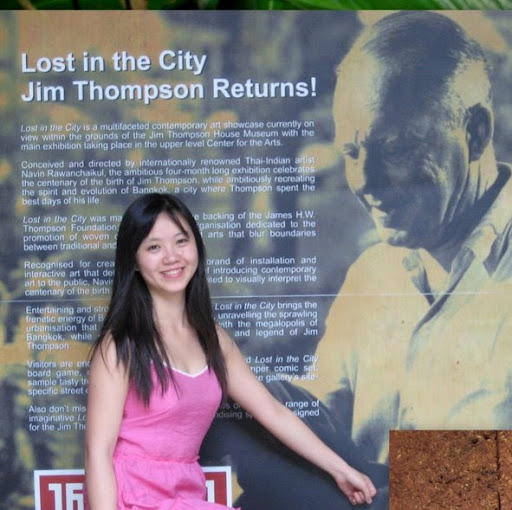
Qing Li
Classmates

Qing Li
view sourceSchools:
St. John's Kilmarnock School Waterloo Morocco 2001-2005

St. John's Kilmarnock Sc...
view sourceGraduates:
Brent Diefenbacher (1999-2003),
Braden Jennings (1999-2003),
Qing Li (2001-2005),
Laura Slavniek (1987-1992),
Mike Baier (1993-1998)
Braden Jennings (1999-2003),
Qing Li (2001-2005),
Laura Slavniek (1987-1992),
Mike Baier (1993-1998)

Richard Montgomery High S...
view sourceGraduates:
James Jacocks (1960-1964),
Patricia Willis (1959-1963),
Jonathan Bridgford (1961-1965),
Kevin Spain (1976-1980),
Qing LI (2003-2007)
Patricia Willis (1959-1963),
Jonathan Bridgford (1961-1965),
Kevin Spain (1976-1980),
Qing LI (2003-2007)

New Utrecht High School, ...
view sourceGraduates:
Raphael Volmar (1982-1986),
Charles Schiffer (1958-1962),
Yu Qing LI (1985-1989),
Carol Sagona (1982-1986)
Charles Schiffer (1958-1962),
Yu Qing LI (1985-1989),
Carol Sagona (1982-1986)

School in the Gardens Pub...
view sourceGraduates:
LI Qing (1995-1999),
Muhammad Hussain (1998-2002),
Moniruzzaman Nil (1996-2000),
Yang Shen (1985-1989),
Dominick Bermudez (1994-1997)
Muhammad Hussain (1998-2002),
Moniruzzaman Nil (1996-2000),
Yang Shen (1985-1989),
Dominick Bermudez (1994-1997)

Grace Christian Academy, ...
view sourceGraduates:
LI Qing (1993-1997),
Brandy Ashford (1992-1996),
Star Stephens (1994-1998),
Jamie Wilson (1990-1994)
Brandy Ashford (1992-1996),
Star Stephens (1994-1998),
Jamie Wilson (1990-1994)
Youtube

Qing Qing Li
view source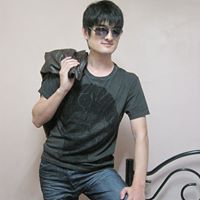
Qing Lin Li
view source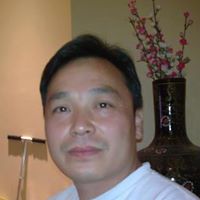
Qing Zhi Li
view source
Qing Ju Li
view source
Qing Ping Li
view source
Qing Li
view source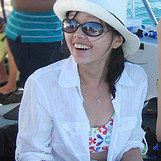
Qing Li
view source
Xiu Qing Li
view sourceGet Report for Qing Li from Center Moriches, NY, age ~42
















